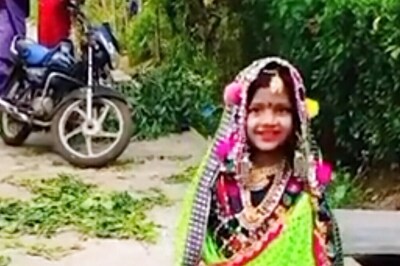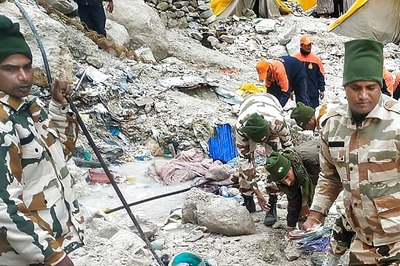
views
BELLARY: Rangoli, a traditional decorative folk art, is considered an invitation for Goddess Mahalakshmi to adorn and bless households. Indian homes have been decorated with colourful Rangolis by women during festivals, who pray for the well being of their families and protection of their homes from evil eyes. Traditionally, the thresholds of Indian homes are decorated with colourful Rangolis which lend a charming and welcoming note. On Deepavali day, women draw a variety of Rangolis in front of their homes. Initially, the floor is cleaned using water then, Rangoli is drawn with white and coloured powders and it is decorated with leaves, flowers and petals. In rural areas, Rangoli is drawn on the surface which is already cleaned or layered with cow dung. The colourful Rangoli powder in the backdrop of dark green colour reflects attractively. Rangoli is derived from the words - Rang (colour) and Awali (row of colours). The Rangoli patterns in Western Indian states of Maharashtra, Gujarat and Rajasthan are intricate and colourful.The purpose of Rangoli is decoration and it is thought to bring good luck. Design depictions may also vary as they reflect traditions, folklore and practices that are unique to each area. It is traditionally done by women. Come Deepavali, women in north Karnataka draw different colours of Rangoli in front of their houses. The Rangoli motifs are colourful and attractive and are specific to different regions. Though many of the Deepavali Rangolis are circular, many patterns reflect zodiac symbols or geometric patterns forming the lotus. Rangolis are drawn in the shape of conch shells, footprints, Swastik and birds. Some Rangolis are made of white powder or rice flour.


















Comments
0 comment